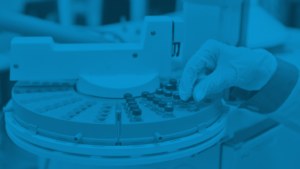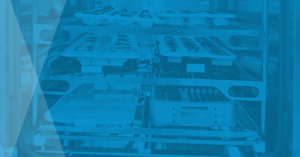Methods for Measuring Ethylene Oxide Residuals via Extensive Extraction
EtO gas and EtO sterilization: what are they?
The chemical gas ethylene oxide, sometimes known as EO or EtO, is frequently used to sterilize medical equipment and supplies. ethylene oxide is powerful and deeply penetrating alkylating agent. Because of these qualities, it works incredibly well as a sterilizer in humid and vacuumed environments. In actuality, ethylene oxide is used annually to sterilize about 20 billion medical items. Therefore, approximately 50% of sterilized medical supplies in the US are ethylene oxide sterilized. But ethylene oxide can potentially cause cancer at certain concentrations.
What is residuals testing for ethylene oxide (EtO)?
Its absorption into some materials and its reactivity with water (or other material components) to generate poisonous residual chemicals (ethylene oxide, ethylene glycol, and ethylene chlorohydrin) are the main problems with utilizing ethylene oxide for sterilization. Both humans and the ecosystem are at risk from these leftover chemicals. Ethylene chlorohydrin is created when ethylene oxide and chloride molecules combine, whereas ethylene glycol is created when ethylene oxide and water mix. To ensure patient safety when using medical devices and products, ethylene oxide-sterilized products must adhere to stringent EtO residuals limitations. EtO residuals testing determines the amount of ethylene oxide and ethylene chlorohydrin that remains in medical equipment and other EtO-sterilized goods or packaging.
Which products need to be tested for ethylene oxide (EtO) residuals?
EtO residuals testing is necessary for any ethylene oxide-sterilized objects that come into direct contact with a patient. EO residual testing is not necessary if your product or gadget is not in direct touch with the patient. Medical equipment with embedded electronics and those that cannot tolerate steam (autoclave) treatment are ideal candidates for ethylene oxide sterilization because of its low temperature conditions. Additionally, ethylene oxide is used to sanitize the curtains and personal protective equipment that medical professionals wear. Sterilized with ethylene oxide, medical devices include implanted stents and external wound dressings. Catheters, guidewires, cardiac valves, and vascular closure devices are other devices. Ethylene oxide can also be used to sterilize products that contain gadgets, medications, and biologics all in one package. Nearly all plastics can be sterilized with ethylene oxide. Ethylene oxide is commonly used to sterilize plastics, elastomer polymeric materials, heat-labile materials (such as electronics), and biomaterials.
Because of the vacuum used during sterilization, ethylene oxide is not advised for medical devices that have batteries integrated in them. For materials that are susceptible to temperatures between 30°C and 60°C or for medical equipment composed of materials that are sensitive to humidity, ethylene oxide sterilization is not advised. Polyolefin resins, including polypropylene (PP), high-density polyethylene (HDPE), and low-density polyethylene (LDPE), are polymers that can withstand ethylene oxide sterilization.

How is residue testing for ethylene oxide (EtO) carried out?
Depending on how long a medical device is in contact with a patient, EtO-sterilized devices are assigned to one or more of three exposure categories. These groups are intended to shield patients from the various levels of disease and tissue damage that might result from EtO-related cellular toxicity. Limited exposure (less than 24 hours), protracted exposure (one day to thirty days), and everlasting exposure (lifetime limit) are the three types of EtO exposure. There are particular milligram requirements for each group. Current ISO 10993-7 EtO and ECH residual limits are available here.
The quantity and kind of EtO residuals in your sterilized product are ascertained using two distinct analysis techniques. These techniques are thorough extraction and simulated-use. To satisfy the ISO 10993-7 requirements for EtO residual testing, a product can be evaluated using either simulated-use or exhaustive extraction. It is not required to evaluate a product using both exhaustive extraction and simulated-use.
How does exhaustive extraction quantify ethylene oxide (EtO)?
In exhaustive extraction, EtO (or ECH) is extracted one after the other until the amount of EtO (or ECH) is less than 10% of what was found in the initial extraction. As an alternative, extraction is carried out exhaustively until the amounts of cumulative EtO residues do not significantly rise. When a whole device comes into contact with a patient, this extraction technique is employed. Until the exhaustive criteria and device use (limited, prolonged, and permanent exposure) criteria are satisfied, exhaustive extractions are usually carried out every 24 hours. Extensive extraction may not be feasible for devices that are huge or complex. In these cases, the EtO residuals for the entire device are extrapolated from extracts of representative parts of the device. The following describes four techniques for determining EtO from thorough extractions.
Thermal extraction for EtO exhaustive extraction
A closed septum vial containing one gram of medical device or product sample is heated until the vial’s partial pressure of EtO gas achieves equilibrium. The gas chromatograph column is then filled with headspace gas samples. An EtO standard curve chromatogram can be used to determine the amount of EtO extract. When gas chromatography is used to read hot samples right after they are taken out of the oven, the inaccuracy is more than 20%. However, as the temperature of the vial rises to room temperature, certain product materials resorb ethylene oxide gas. Therefore, it will be necessary to inject warm samples into the column for thermal extraction testing. The sum of the EtO readings acquired by heating each sample until EtO exhaustion conditions are met is the total amount of ethylene oxide residuals in a sample.
Headspace gas analysis is performed after ethanol-based EtO exhaustive extraction
In order to create ethylene oxide standards, EtO is diluted in ethanol to produce concentrations ranging from 0.4 micrograms per milliliter (μg/ml) to 2.0 μg/ml. Additionally, a 0.5 μg/ml concentration of propylene oxide (PO) in ethanol standard is created. Headspace bottles are used to construct a standard curve for the EtO/PO ratio in gas chromatography (see Figure 1 below). Plotting the height or area of the PO (X-axis) and EO (Y-axis) peaks results in the curve. For a slow of 0.5 and a y-intercept of zero, the linear correlation coefficient, or r, of 0.999 or above is utilized. Weigh the sample and chop it into pieces that are five millimeters long so that it may be placed in the headspace container for examination. After adding the PO standard solution and capping the bottle, gently shake the sealed bottle containing the sample pieces for three hours at 70°C. Inject duplicate aliquots of headspace gas into the gas chromatograph column in order to measure the ethylene oxide residual. An EtO/PO standard curve can be used to determine the amount of EtO extract.
For evaluating big or complicated devices, solvent extraction (explained below) may be more practical than headspace approaches. Furthermore, in polymers that prefer to retain EtO residuals, like poly-(methylmethacrylate), headspace approaches should be avoided for EtO recovery.
EtO thorough extraction with a solvent or solvents
The choice of extraction fluid for solvent extraction processes is influenced by the device’s and its component parts’ material makeup. Fluids that have the ability to dissolve the sample material yield complete EtO recovery. After choosing an appropriate solvent, ten milliliters of solvent are added to a sealed container containing around one gram of the medical device (or product). The submerged sample is then allowed to rest at room temperature (25°C) for 24 hours before being evaluated using gas chromatography. Inject duplicate aliquots of device extract onto the gas chromatograph column in order to measure the ethylene oxide residual. An EtO standard response curve chromatogram can be used to determine the amount of EtO extract.
EtO thorough extraction with gas chromatography, ethanol, and a derivative of bromohydrin
Bromide ions are present in certain medical equipment, such as butylated rubbers. These devices have the ability to convert leftover EtO into an ethylene bromohydrin (EBH) breakdown product. Therefore, prior to the synthesis of bromohydrin derivatives, device samples should be evaluated for EBH.
In order to create ethylene oxide concentrations ranging from 0.4 μg/ml to 2.0 μg/ml, EtO is diluted in ethanol. Additionally, a PO standard is made in ethanol at a concentration of 0.5 μg/ml. The PO and EtO standards combined with hydrobromic acid are used to construct a gas chromatography standard curve for EBH vs. propylene bromohydrin (PBH). For the standard curve, a linear correlation coefficient, r, of 0.999 or higher is employed. Weigh a 10- to 30-milligram sample and put it in a vial with PO and hydrobromic acid for EtO sample analysis. After standing at room temperature for an hour, the vial is heated in a water bath for eight hours at 50°C. After 16 hours of additional heating at 50°C in a lab oven, the vial is allowed to cool to room temperature. Fill the vial with sodium bicarbonate, shake vertically for 30 minutes, then shake horizontally for 30 minutes and rest for 10 minutes. The mixture is then filtered through a tiny Millipore filter after the samples have been centrifuged. Inject duplicate aliquots of the filtrate onto the gas chromatograph column in order to measure the ethylene oxide residual. An EtO standard response curve chromatogram can be used to determine the amount of EtO extract.
Complete extraction of ethylene chlorohydrin using EtO
A part of the device (or the full device sample) should be weighed, put in a container, filled with water, and sealed. The submerged sample is then allowed to settle for a full day before being evaluated using gas chromatography. After agitating the sample extract for ten minutes, inject duplicate aliquots of device extract onto the gas chromatograph column for the gas chromatography assessment. The relative peak height or area of the chromatogram in relation to an ECH standard response curve can be used to determine the ECH quantity.
In Brief
Testing for ethylene oxide (EtO) residuals is essential for the regulatory approval of medical items and devices. EtO-sterilized items are safe for patient use and non-toxic thanks to thorough extraction assays and simulated-use testing for EtO residuals. The process of exhaustive extraction entails extracting EtO (or ECH) one after the other until the final concentration is less than 10% of the initial amount found. As an alternative, extraction is carried out exhaustively until the amounts of cumulative EtO residues do not significantly rise. When a whole device comes into contact with a patient, this extraction technique is employed. Overall, be sure the contract testing company you select can assist you with the proper ethylene oxide residuals testing for your particular product or medical device requirements.







